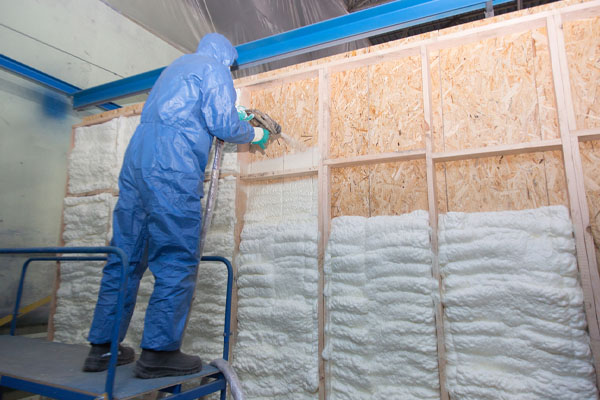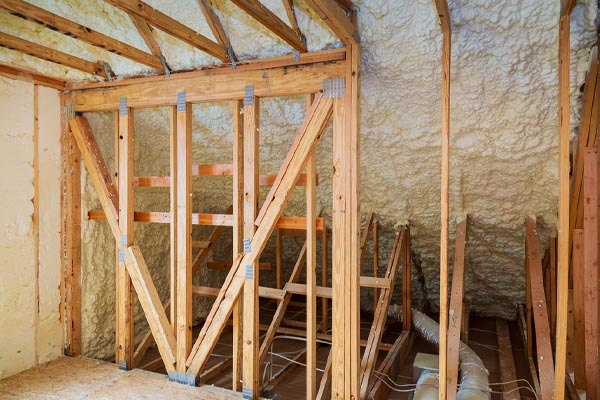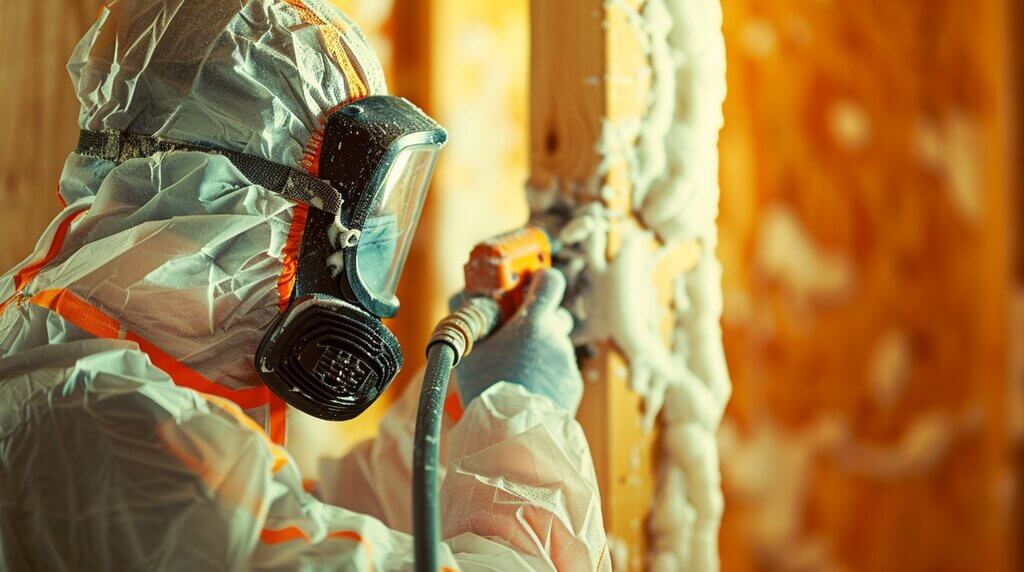High-pressure and low-pressure spray foam systems differ primarily in their application scale, the equipment used, and the final quality of the cured foam. High-pressure systems are what professionals use for large jobs like insulating an entire house. They use powerful machinery to heat and pressurize the chemical components, resulting in a highly efficient reaction and a superior, more consistent foam product. Low-pressure systems, on the other hand, are sold in smaller, disposable kits designed for sealing gaps or insulating very small areas, and they operate at ambient temperatures without sophisticated equipment.
While both systems produce spray polyurethane foam, the process and results are worlds apart. The distinction between them lies in the technical process, their appropriate uses, and the reasons professional spray foam systems, high-pressure application is the standard for any significant insulation project. The information here is based on the practical realities of how these systems work in the field.
A Look at High-Pressure Professional Systems
High-pressure spray foam systems are complex and powerful. They are typically mounted in a truck or trailer and consist of several main parts: large 55-gallon drums of the two chemical components (an "A" side and a "B" side), a proportioner machine, a generator, an air compressor, and several hundred feet of heated hose leading to a specialized spray gun.
The proportioner is the heart of the system. It draws the chemicals from the drums and pressurizes them to between 1,000 and 1,500 PSI. At the same time, it heats them to a precise temperature, usually between 120°F and 140°F. This heated, high-pressure liquid travels through the hoses to the spray gun. Only at the very tip of the gun do the two components mix. The intense pressure atomizes the chemicals, creating a fine mist that ensures they mix completely and react almost instantly upon hitting a surface.
This rapid, highly controlled reaction is what produces the best quality foam. It results in a fine, consistent cell structure, which is what gives the foam its high R-value and strength. It also maximizes the yield, meaning the contractor gets the most finished foam product out of each drum of chemicals.

Bonus Tip: The temperature of the surface being sprayed is just as important as the temperature of the chemicals. Professional installers will measure the substrate temperature to ensure it's within the manufacturer's specified range for optimal adhesion and curing.
Understanding Low-Pressure Kits
Low-pressure systems are much simpler. They typically consist of two small, pressurized tanks (often called an "A" tank and a "B" tank) connected by hoses to a plastic applicator gun. These kits are self-contained and do not require external power or heat. The pressure inside the tanks is typically around 200 to 250 PSI.
When the trigger on the gun is pulled, the two chemicals are pushed through the hoses and mix in the nozzle. Because there is no external heat and much lower pressure, the mixing is less thorough and the chemical reaction is slower. This can lead to a less consistent cell structure in the final foam product. The foam from these kits often has a slightly lower R-value per inch than professionally applied foam and the yield is generally lower.
These kits are best suited for small, specific tasks. They are great for air sealing a rim joist in a basement, filling gaps around window and door frames, or insulating a small, hard-to-reach cavity. They are not designed, nor are they cost-effective, for insulating large areas like an entire wall or an attic.
A Head-to-Head Comparison
Things to Consider When Choosing a System
Beyond the quick summary in the table, the choice between a low-pressure kit and a professional high-pressure installation comes down to the specific needs of the project.

The Scope of the Work
This is the most important factor. How large is the area to be insulated? The measurement used in the industry is the "board foot" (one square foot at one inch thick). A typical low-pressure kit might yield 200 board feet. Insulating a 1,000-square-foot attic to a depth of six inches requires 6,000 board feet. Trying to do a large job with small kits would be incredibly time-consuming and prohibitively expensive. As a general rule, any project larger than a small room is best left to the professionals.
The Desired Performance
For critical applications, like insulating the underside of a roof deck to create a conditioned attic, the quality of the foam is paramount. The consistent density, adhesion, and R-value of high-pressure applied foam are necessary to ensure the system performs correctly and doesn't create moisture problems. The variability of low-pressure kits makes them a risk for these types of technical applications.
Safety Considerations
Spray foam chemicals require respect. Professional installers undergo extensive safety training and wear full personal protective equipment (PPE), including a fresh-air-supplied respirator. While low-pressure kits are designed for consumer use, they still require good ventilation and proper PPE, including safety glasses, gloves, and a respirator, as the uncured chemicals can cause skin irritation and respiratory issues.
Bonus Tip: When using a low-pressure kit in cooler weather, the yield and performance can be improved by gently warming the tanks to room temperature (around 75°F) by letting them sit inside for a day before use. Never use an external heat source to heat the tanks.
Answering Common Questions About Spray Foam Systems
Can I use a low-pressure kit to insulate my garage?
You could, but it would likely be very expensive. For a standard two-car garage, you would need numerous kits, and the final cost would probably be higher than hiring a professional. The quality of the insulation would also be less consistent.
Is the cured foam from a low-pressure kit safe?
Yes. Once spray foam is fully cured (typically after 24 hours), it is inert and safe. The safety concerns are primarily related to the application process when the chemicals are still in a liquid state.
Why is the cost per board foot so much higher with low-pressure kits?
The cost difference comes from packaging and efficiency. With low-pressure kits, you are paying for the convenience of the disposable tanks and the small-scale packaging. Professionals buy their chemicals in bulk 55-gallon drums, which dramatically lowers the material cost per unit of volume.
Can I rent a high-pressure spray foam rig?
Generally, no. The equipment is extremely expensive and requires specialized training to operate safely and effectively. The liability is too high for rental companies, so these rigs are only owned and operated by professional insulation contractors.
Do both systems produce open-cell and closed-cell foam?
Yes, you can get both open-cell and closed-cell formulas in both high-pressure and low-pressure formats. However, high-pressure application is still the standard for achieving the best performance with either type of foam over a large area.
The Right Tool for the Right Job
Ultimately, high-pressure and low-pressure spray foam systems are two different tools designed for completely different scales of work. Low-pressure kits offer a convenient and effective way for homeowners to tackle small air sealing and insulating jobs. High-pressure systems are the heavy-duty, professional-grade equipment required to properly insulate a building, ensuring high quality, cost-effectiveness, and long-term performance. For any substantial insulation project, a professional high-pressure system is the only appropriate choice.
Consulting with a Professional Installer
For any large-scale insulation job, speaking with a professional is the logical next step. Homeowners in the Las Vegas area considering spray foam can get an expert assessment of their project's scope and a clear explanation of the high-pressure application process. The team at Supreme Spray Foam LV specializes in these professional-grade installations and can provide expert advice. They can be reached by email at [email protected] or by phone at (702) 904-9895 to discuss a project.
Reviewer: Michael Carter reviewed this article using insight gained over 12 years in the spray foam business. His feedback focused on helping contractors reach new customers without overcomplicating their message.





Comments